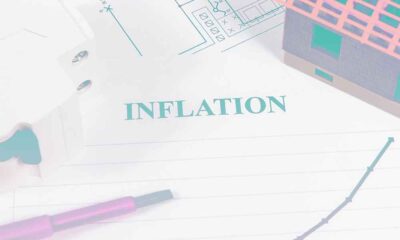Business
Structural Reforms Back PH’s Ability to Manage External Debt
Structural reforms in the last 20 years provided the Philippines strong support to manage its external liabilities even as foreign debt increases vis-à-vis the government’s programs to address the pandemic.
“While the country’s outstanding external debt will increase to the extent of the foreign borrowings that will be obtained by the government, we would like to assure the public that the impact of these borrowings on key metrics is manageable and sustainable in view of the favorable terms extended by the creditors,” Bangko Sentral ng Pilipinas (BSP) Governor Benjamin Diokno told journalists in a virtual briefing Thursday.
He said the central bank’s policy-making Monetary Board (MB) as of end-July this year approved the government’s USD5.6-billion foreign borrowings for programs that will address the impact of the coronavirus disease (Covid-19) pandemic.
About USD2.6 billion of these borrowings came from the Asian Development Bank (ADB); USD1.5 billion from the International Bank for Reconstruction and Development (IBRD), the lending arm of the World Bank Group; USD750 million from the Asian Infrastructure and Investment Bank (AIIB); JPY50 billion or about USD477 million from the Japan International Cooperation Agency (JICA); and EUR250 million or about USD295 million from the Agence Francaise de Developpement (AFD), the French government’s program that supports sustainable development goals.
Diokno said amid the rising government debt, the country’s external debt ratio remains among the lowest in Asia, which is among the reasons why credit rating agencies have affirmed their credit ratings on the Philippines.
He said the country’s foreign debt reached USD81.4 billion as of end-March this year, lower than the USD83.6 billion as of end-December 2019.
As of end-March this year, the country’s debt to gross domestic product (GDP) ratio stood at 21.4 percent, lower than the 22.2 percent as of end-December 2019 and the 60-percent threshold for emerging markets (EMs).
Diokno said this is lower than the ratio of other EMs such as Malaysia, 64.1 percent; Indonesia, 34.5 percent; and Thailand, 30 percent.
He said external debt print in the first quarter this year is a “good number” since external debt reached as high as 60 percent of GDP 15 years ago.
“The latest ratio indicates a sustained strong position to service foreign borrowings in the medium to long term,” he said.
Diokno said the country’s debt service ratio (DSR), a gauge of the adequacy of the country’s foreign exchange earnings relative to its maturing obligations, improved to 8.9 percent as of end-March from year-ago’s 5.7 percent.
To date, the bulk or 83.6 percent of the country’s external debt is accounted for by medium to long term (MLT) loans, while the balance is accounted for by short-term loans.The bulk or 55.4 percent is the share of the public sectors while the private sector accounts for 44.6 percent. (PNA)

































